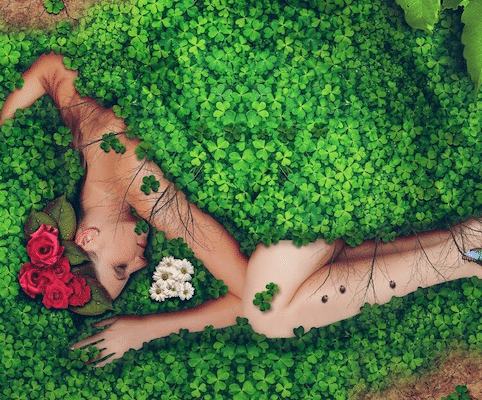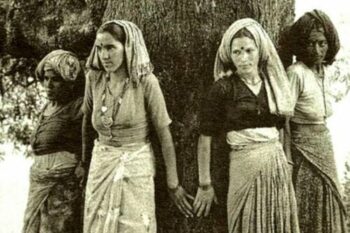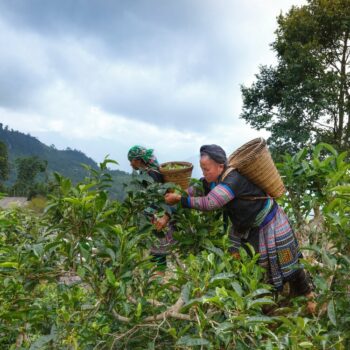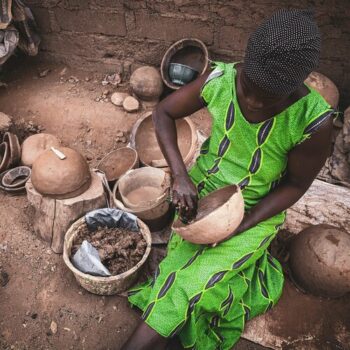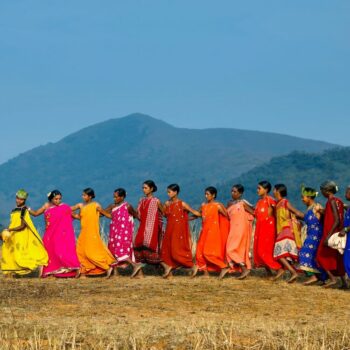May Sarton
May Sarton | |
|---|---|
 | |
| Born | Eleanore Marie Sarton May 3, 1912 Wondelgem, Belgium |
| Died | July 16, 1995 (aged 83) York, Maine |
| Resting place | Nelson, New Hampshire |
| Occupation | Novelist, poet, memoirist |
| Nationality | Belgian, American |
| Genre | Fiction, non-fiction, poetry, children's literature |
| Notable awards | Sarton Memoir Award |
| Partner | Judith "Judy" Matlack |
May Sarton was the pen name of Eleanore Marie Sarton (May 3, 1912 – July 16, 1995), a Belgian-American poet, novelist and memoirist. Although her best work is strongly personalised with erotic female imagery, she resisted the label of ‘lesbian writer’, preferring to convey the universality of human love.
Biography[edit]
Sarton was born in Wondelgem, Belgium (today a part of the city of Ghent), the only child of historian of science George Sarton and his wife, English artist Mabel Eleanor Elwes. When German troops invaded Belgium after the assassination of Archduke Franz Ferdinand in 1914, her family fled to Ipswich, England, where Sarton's maternal grandmother lived.[citation needed]
One year later, they moved to Boston, Massachusetts, where her father started working at Harvard University. Sarton started theatre lessons in her late teens but continued writing poetry throughout her adolescence. She went to school in Cambridge, Massachusetts, graduating from Cambridge High and Latin School in 1929.[citation needed]
Sarton won a scholarship to Vassar but felt drawn to the theater after seeing Eva Le Gallienne perform in The Cradle Song. She joined Le Gallienne's Civic Repertory Theatre in New York and spent a year working as an apprentice. However, Sarton continued to write poetry. When she was seventeen, she published a series of sonnets in December 1930, some of which were featured in her first published volume, Encounter in April (1937).[1][2]
When she was nineteen, Sarton traveled to Europe, living in Paris for a year. In this time, she met such literary and cultural figures as Virginia Woolf, Elizabeth Bowen, Julian Huxley and Juliette Huxley, Lugné-Pöe, Basil de Sélincourt, and S. S. Koteliansky. Sarton had affairs with both of the Huxleys.[3] It was within this environment and community that she published her first novel, The Single Hound (1938).[4]
In 1945 in Santa Fe, New Mexico, she met Judith "Judy" Matlack (September 9, 1898–December 22, 1982), who became her partner for the next thirteen years. They separated in 1956, when Sarton's father died and Sarton moved to Nelson, New Hampshire. Honey in the Hive (1988) is about their relationship.[5] In her memoir At Seventy, Sarton reflected on Judy's importance in her life and her Unitarian Universalist upbringing.[6] She was elected a fellow of the American Academy of Arts and Sciences in 1958.[7]
Sarton later moved to York, Maine. In 1990, she was temporarily debilitated by a stroke. Since writing was difficult, she used a tape recorder to record and transcribe her journal Endgame: A Journal of the Seventy-Ninth Year (1992). Despite her physical difficulties, she maintained her sense of independence. Endgame was followed by the journal Encore: A Journal of the Eightieth Year (1993), a celebration of Sarton's life. She won the Levinson Prize for Poetry in 1993. Her final book, Coming Into Eighty (1995), published after her death, covers the year from July 1993 to August 1994, describing her attitude of gratitude for life as she wrestled with the experience of aging.[8]
She died of breast cancer on July 16, 1995, and is buried in Nelson Cemetery, Nelson, New Hampshire.[9]
Works and themes[edit]
May Sarton wrote 53 books, including 19 novels, 17 books of poetry, 15 nonfiction works, 2 children's books, a play, and additional screenplays.[10][11] According to The Poetry Foundation, Sarton's style as defined by critics is "calm, cultured, and urbane."[12] In much of her writing, Sarton maintains a politically conscious lens, but what is considered May Sarton's best and most enduring work lies in her journals and memoirs, particularly Plant Dreaming Deep (about her early years at Nelson, ca. 1958-68), Journal of a Solitude (1972-1973, often considered her best), The House by the Sea (1974-1976), Recovering (1978-1979) and At Seventy (1982-1983). In these fragile, rambling and honest accounts of her solitary life, she deals with such issues as aging, isolation, solitude, friendship, love and relationships, lesbianism, self-doubt, success and failure, envy, gratitude for life's simple pleasures, love of nature (particularly of flowers), the changing seasons, spirituality and, importantly, the constant struggles of a creative life. Sarton's later journals are not of the same quality, as she endeavored to keep writing through ill health and by dictation.
Although many of her earlier works, such as Encounter in April, contain vivid erotic female imagery, May Sarton often emphasized in her journals that she didn't see herself as a "lesbian" writer: "The vision of life in my work is not limited to one segment of humanity...and has little to do with sexual proclivity".[13] Rather she wanted to touch on what is universally human about love in all its manifestations. When publishing her novel Mrs. Stevens Hears the Mermaids Singing in 1965, she feared that writing openly about lesbianism would lead to a diminution of the previously established value of her work. "The fear of homosexuality is so great that it took courage to write Mrs. Stevens Hears the Mermaids Singing," she wrote in Journal of a Solitude, "to write a novel about a woman homosexual who is not a sex maniac, a drunkard, a drug-taker, or in any way repulsive, to portray a homosexual who is neither pitiable nor disgusting, without sentimentality ..." [14] After the book's release, many of Sarton's works began to be studied in university level women's studies classes, being embraced by feminists and lesbians alike.[1] However, Sarton's work should not be classified as 'lesbian literature' alone, as her works develop many deeply human issues of love, loneliness, aging, nature, self-doubt etc., common to both men and women.
Margot Peters' controversial biography (1998) revealed May Sarton as a complex individual who often struggled in her relationships.[15] A selected edition of Sarton's letters was edited by Susan Sharman in 1997[3] and many of Sarton's papers are held in the New York Public Library.[16]
Bibliography[edit]
Poetry books[edit]
| Nonfiction[edit]
| Novels[edit]
| Children's books[edit]
| Play[edit]
| Letters[edit]
|
References[edit]
- ^ a b May Sarton: A Poet Archived February 3, 2012, at the Wayback Machine. Harvard Square Library.
- ^ "May Sarton: A Poet's Life". digital.library.upenn.edu. Retrieved November 30,2018.
- ^ a b Sarton, May, 1912-1995. (1997). May Sarton : selected letters, 1916-1954. Sherman, Susan (Susan Jean), 1939-. London: Women's Press. ISBN 0-7043-4535-8. OCLC 43125718.
- ^ "May Sarton: A Poet's Life". digital.library.upenn.edu. Retrieved November 30,2018.
- ^ Pobo, Kenneth (2002). "Sarton, May". Chicago. Chicago: glbtq, Inc. Archived from the original on August 15, 2007. Retrieved August 29, 2007.
- ^ "May Sarton". Unitarian Universalist Historical Society.
- ^ "Book of Members, 1780–2010: Chapter S" (PDF). American Academy of Arts and Sciences. Retrieved July 25, 2014.
- ^ "May Sarton: A Poet's Life". digital.library.upenn.edu. Retrieved November 30,2018.
- ^ "May Sarton". Poets.org. Academy of American Poets. Retrieved May 10,2009.
- ^ "May Sarton". Poetry Foundation. Poetry Foundation. November 30, 2018. Retrieved November 30, 2018.
- ^ "May Sarton Selected Bibliography". digital.library.upenn.edu. Retrieved November 30, 2018.
- ^ "May Sarton". Poetry Foundation. Poetry Foundation. November 30, 2018. Retrieved November 30, 2018.
- ^ Sarton, May (1992). Journal of a Solitude. WW Norton & Company.
- ^ Journal of a Solitude, 1973, pp. 90-91.
- ^ Peters, Margot. (1998). May Sarton : a biography (1st ed.). New York: Fawcett Columbine. ISBN 0-449-90798-8. OCLC 39440918.
- ^ "archives.nypl.org -- May Sarton Papers". archives.nypl.org. Retrieved January 13, 2020.
External links[edit]
- Karen Saum (Fall 1983). "May Sarton, The Art of Poetry No. 32". The Paris Review.
- "May Sarton," Poetry Foundation.
- May Sarton Collection, University of New England, Portland, Maine.
- "May Sarton Shrine". Language is a Virus.
- "May Sarton: A Poet's Life". University of Pennsylvania.
- "About May Sarton". Goodale Hill Press.
- "May Sarton". May Sarton at Find A Grave
- Guide to the May Sarton Collection 1950-1954 at the University of Chicago Special Collections Research Center
Top reviews from other countries
jclark@gathorne.u-net.com
3.0 out of 5 stars DisappointingReviewed in the United Kingdom on April 6, 2019
Verified Purchase
May Sarton calls this ' a journal of solitude' but she was actually just living alone in a fairly ordinary situation and much of the time she is talking about lunches she has with friends, trips that she makes to New York, etc. So it was a very peopled kind of solitude, very unlike that undertaken by, say, Thoreau at Walden Pond, which had a real purpose and focus. There are some nice observations and quotes here and there, but overall I did not feel that she any great wisdom to convey, and in fact, in several places but especially in the last sections, she reveals herself as rather a selfish and undeveloped person. Cat lovers beware of this book!
5 people found this helpfulReport abuse
Boorie
1.0 out of 5 stars Don’t buy it.Reviewed in the United Kingdom on February 27, 2020
Verified Purchase
Another boring book. What a boring woman she was! Spend your time reading something interesting, don’t waste your time on this book.
One person found this helpfulReport abuse
SWS
5.0 out of 5 stars Amazing delivery and bookReviewed in the United Kingdom on April 27, 2020
Verified Purchase
Fantastic service and an amazing book
Report abuse
B Gray
5.0 out of 5 stars Five StarsReviewed in the United Kingdom on June 11, 2016
Verified Purchase
Great read .
One person found this helpfulReport abuse
Charlene D. Jones
3.0 out of 5 stars Oh wellReviewed in Canada on October 25, 2019
Verified Purchase
I didn't really understand this book.
Report abuse







